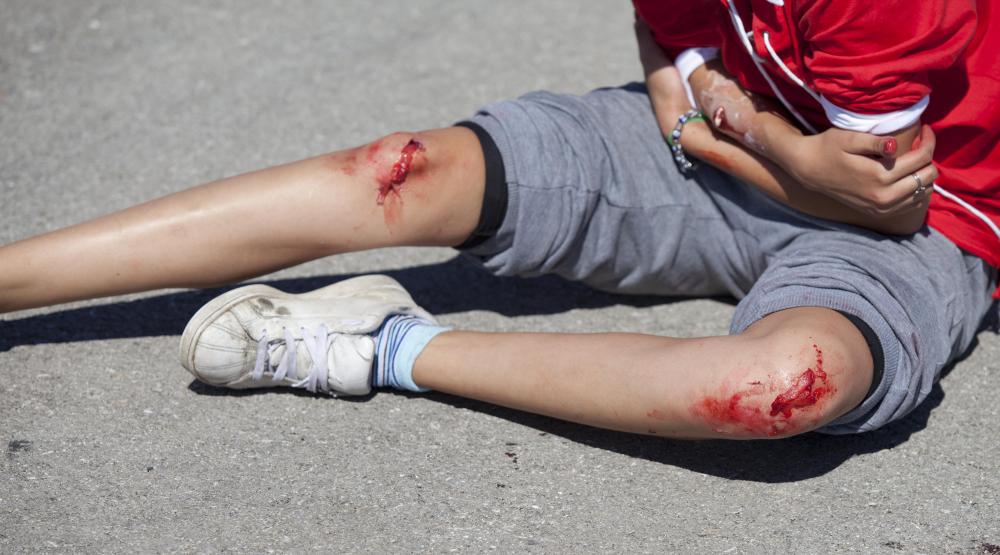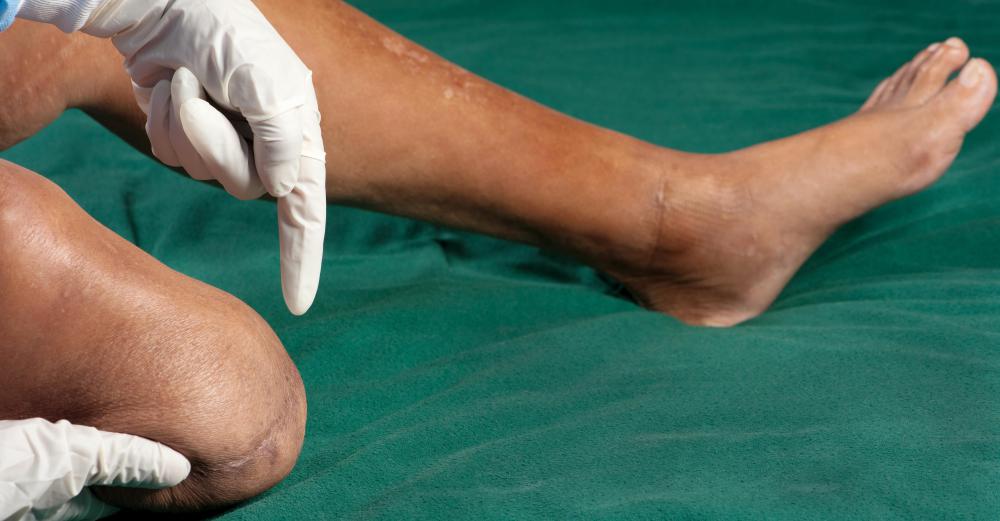At TheHealthBoard, we're committed to delivering accurate, trustworthy information. Our expert-authored content is rigorously fact-checked and sourced from credible authorities. Discover how we uphold the highest standards in providing you with reliable knowledge.
What is Gaseous Gangrene?
Gangrene is a term that describes a condition where the tissue starts to rot while still attached to the body. In many cases, this can happen because bacteria invade the site of a wound. In the case of gaseous gangrene, better known as gas gangrene, the bacteria release a gas while attacking the wound area, which causes a ballooning effect. The particular species of bacterium associated with gaseous gangrene is called Clostridium. This disorder is considered extremely dangerous and almost certainly deadly without immediate emergency treatment.
Sometimes bacteria colonies can release gas as part of their eating process, and this is the case with the Clostridium species. The gas itself has several different effects on tissue. Sometimes it can make a popping sound under the skin when the area around the infection is touched. In other cases, it may cause the infected area to balloon out noticeably.

There are also several other gaseous gangrene symptoms which are generally common to all other kinds of gangrene. For example, there will generally be a lot of pain in the area of the wound, and the skin will gradually begin to lose color. As the gangrene advances, eventually the tissue will usually turn almost black. There is also normally brown drainage around the wound with a foul odor. Most patients will develop a relatively high fever.

Gaseous gangrene usually only develops with a fairly severe wound such as a surgical incision or something similar. In some cases, it may be possible for it to develop with a less severe wound or some other kind of injury. Once it develops, the only thing that will save a patient is immediate treatment.
Treatment of gaseous gangrene generally starts with removal of the infected tissue and immediate use of intravenous antibiotics. In order to get rid of the tissue causing the infection, doctors are often forced to use amputation. In many cases, the decision to amputate has to be made relatively quickly because the bacterial infection can spread very rapidly, and the poisoned blood from rotting tissue poses a constant threat to organs around the body.

There was a time when gaseous gangrene and other forms of gangrene where generally much more common. The development of better antiseptics, antibiotics, and overall medical techniques has lessened the occurrence of these kinds of infections. The use of amputation as a treatment method for gangrene is relatively old and was well-known by doctors prior to the 1900s.
AS FEATURED ON:
AS FEATURED ON:
















Discuss this Article
Post your comments